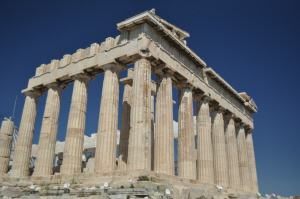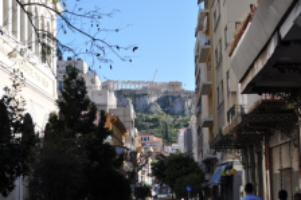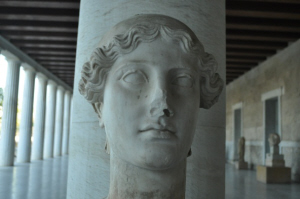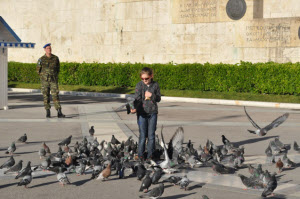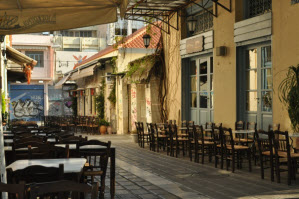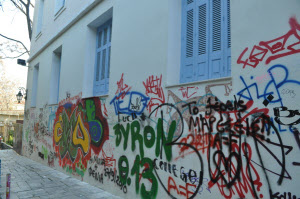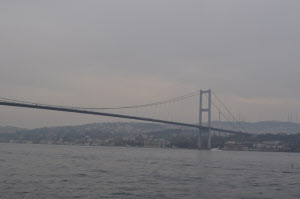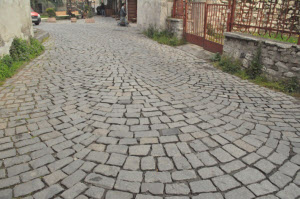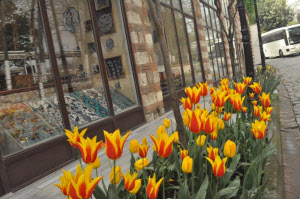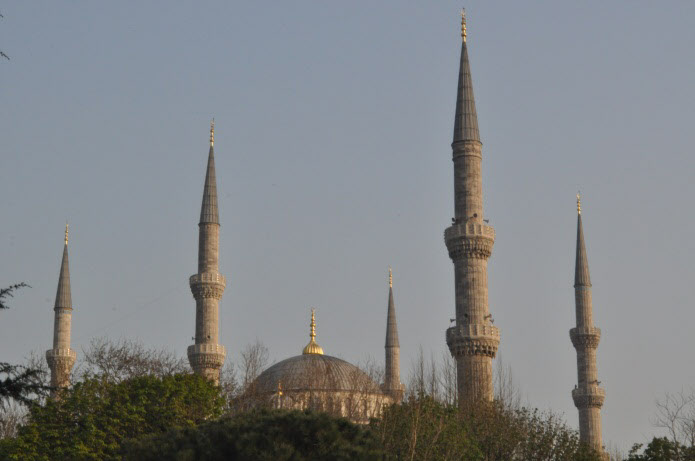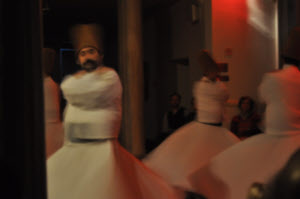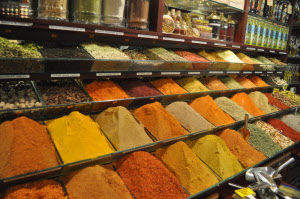by Vani Viswanathan
[box]Big Cities fascinate her for various reasons, says Vani Viswanathan. Despite all the flaws that they may have, they are magical. In a special photo essay, she presents to you the soul of two of her favourite cities that she recently visited—Athens and Istanbul. While you get ready to be transported, here’s also a small prelude that will sure be the perfect launch pad. Text and pictures by Vani Viswanathan.[/box]Big cities are magical. Yes, they are crowded, polluted, full of thievery, and dirty, but they hold dreams – dreams of people migrating in search of better life; they are historical – they are the metros because of their historical importance; they are interesting beyond compare – because of the mix of people they have, and the mix of people they attract as tourists.
As anyone else, I have a few favourite big cities myself. Chennai ranks high up, because I was born and brought up there, and would defend the city to any lengths possible. Singapore, because it was the first city outside of India I ever visited, lived in and spent years in, is up there too, despite my getting bored of the smallness of the city and its dream like organization. Bangkok, Ho Chi Minh and Hong Kong are special too. And from my recent travels, I’ve added Athens and Istanbul on to my list.
All these cities have little somethings that you will want to remember despite their many flaws. Despite the terrible traffic, I’ll love Bangkok because of the reverence people hold for their King, its rich cultural history, pleasant, smiling people, and the yummy food. Despite its constantly polluted sky, I’ll remember Hong Kong for its intense Chinese-ness, sloping streets and lovely skyline. Ho Chi Minh, despite being a fledgling city compared to the others I’ve talked about, I’ll love for the sheer craziness it is – its madly twisted telephone wires, out-of-whack traffic and the small, nice people.
It would be unfair of me to compare these cities to my latest favourites, Athens and Istanbul, because being miles away, they are a different ball game altogether. Athens and Istanbul offered everything that we know Europe best for – cold weather, dark cobbled streets, rich history, beautiful landscapes and buildings, roadside cafés to people-watch. Istanbul has the additional draw of being both Asian and European, what with nothing but a bridge connecting the Asian and European side together. Fresh from a trip to these two cities, I can’t get over the charm these places offered – making me feel lost in the manicured concrete jungle that Singapore is.
In this photo essay, I’ve tried to capture the essence of Athens and Istanbul as I saw it through my eyes and camera lens.
Athens and Istanbul – A Photo Essay
The Acropolis is seen wherever you go – at least in central Athens, it is. Turn into any street, and you see the Acropolis staring right down at the city. It gives you the shivers as you realize buildings built in 400 BC serenely look over a busy, lively city.
The quintessential Greek tourist’s destination – only this time, I had to try hard to capture something that doesn’t include the endless scaffolding and all the cranes that are up to restore the building. The Parthenon was a temple built to honour goddess Athena, and is typical ancient Greek architecture. It’s something to stand there and watch the structure you’ve heard so much of, read so much about, and again, when you realize it’s more than 2500 years old, you are awestruck.
The ancient Greeks got more than just their architecture right – their skill at sculpting is beyond belief. This is a statue of Nike, the Greek goddess of victory. There are more typical Greek statues of bearded men that are more popular, but I liked this particular one for the amazing grace and detail it exhibits – look out for the beautifully drawn eyebrows, and the very perfect lips.
Beyond the architecture, though, Greece had much more to offer; a selection of my favourite moments below.
A (brave!) young girl is surrounded by pigeons that are looking for any peck of grain she might throw. The pigeons are everywhere – in city squares, outside churches, but most often near the bread vendors who are around in pretty much every road corner.
Typically Europe – cafés on roads made of cobbled stones. I didn’t tire walking on these, and many of my lunches and dinners were here too. It’s some sight to watch passengers – dressed in their smart, warm clothing – walk by, smoking, old men/young children playing the accordion to beg, young African men sell fake designer purses and Bangladeshi men selling the weirdest of items – ranging from a device that helps you thread a needle to little megaphones!
One of the most interesting faces of the city was its graffiti – it was beautiful, it was everywhere, it was colourful and added a lot of youth to the ancient city! Hardly anything was spared – even interstate trains were sprayed with graffiti! I couldn’t help get amused of the ‘designated areas’ that Singapore allowed for graffiti – barely a couple of places as far as I can remember.
————————————————————————————————————————————————————————–
I can say Istanbul is out of the world – unique for a number of reasons: one of the largest cities in the world, part European and part Asian, a deeply religious Muslim country, and a place with stunning architecture.
The bridge that connects European Istanbul – the business and financial side of the city – to Asian Istanbul, primarily a residential area. There is an underground passage that’s currently in the works too!
Typical European? Cobbled, sloping roads and streets everywhere that made feet ache!
One of Istanbul’s fascinating features – beautiful tulips everywhere – parks, roadside, traffic junctions, all over! You can almost say that they are obsessed with tulips in the city. I visited Istanbul just when the annual tulips festival had ended, and had a chance to feast on the wonderful colours splashed all across the city.
If you’re in Sultanahmet, the central historical district, six minarets and the dome of the beautiful Blue Mosque will greet you. The biggest and grandest mosques – called so because of the intricate blue-coloured tile work inside the mosque – was built in the 1600s. The structure is especially beautiful at night – the lighting on the mosque is so beautiful it feels surreal.
Istanbul’s culture carries heavy influences particularly from two periods – the Byzantine (Roman – and therefore, Christian), and Ottoman (Muslim). One of the byproducts of this mixture of influences is the Hagia Sophia, a church built by a Roman Emperor that was eventually rebuilt as a mosque, the Aya Sofya. While the outside might seem less impressive, you only have to step in to be dumbfounded by the magnificence of it all – beautiful tiled portraits of Jesus and Constantine emperors, of Jesus with Mary, and large, gilded letters in Arabic – all in the same building. This photograph does no justice to the beauty of the place, but it’s the best I could do – and it doesn’t even capture the painting on the dome of the entire building.
The whirling dervishes – Sufi saints who just whirl around in a trance, to religious Sufi music. It was captivating to watch! The right palm faces up, while the left palm faces down – connecting the humans to God. If you’ve watched the Indian movie Jodhaa Akbar, you might have seen this in the song ‘Khwaja mere Khwaja.’
Finally – more colours in Istanbul – the Egyptian Spice Market. Over 4,000 shops, crowded in a labyrinth that’s difficult to get in and out of – so much so that we got lost and went into the same shops again and again. You get everything Turkish under the sun – ranging from spices to accessories to kebabs.
[box type=”info”]DID YOU KNOW? The post you just read is also a part of a PDF that can be downloaded! Don’t miss the colourful edition and also the chance of reading it all in one place! To download the May 2011 issue as PDF or to flip and read it like a magazine on the e-reader, please use the buttons below.[/box] [button link=”https://sparkthemagazine.com/wp-content/uploads/2011/05/spark-may-2011.pdf” color=”red”]click here to download the May 2011 issue as a PDF[/button] [button link=”http://issuu.com/sparkeditor/docs/spark-may-2011?mode=embed&layout=http%3A%2F%2Fskin.issuu.com%2Fv%2Fcolor%2Flayout.xml&backgroundColor=000000&showFlipBtn=true” color=”green”]click here to flip and read the May 2011 issue like a magazine[/button] [facebook]share[/facebook] [retweet]tweet[/retweet]
